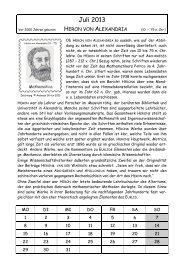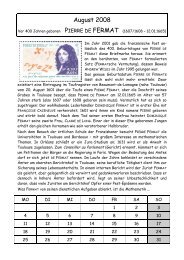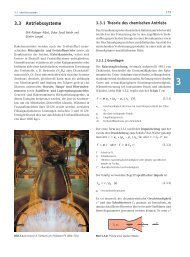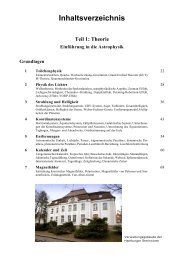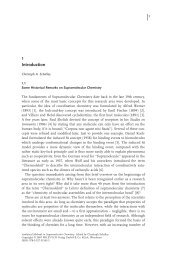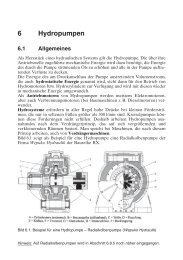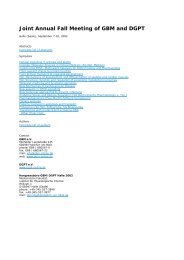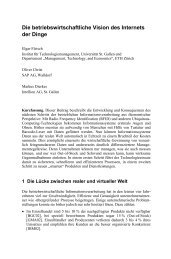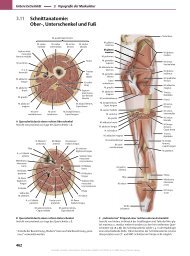From protein transport to organelle development
From protein transport to organelle development
From protein transport to organelle development
Create successful ePaper yourself
Turn your PDF publications into a flip-book with our unique Google optimized e-Paper software.
Johannes Herrmann, Tom Lutz, Stephan Meier, Marc Preuss, Gregor Szyrach,<br />
Frank Baumann<br />
Protein insertion in<strong>to</strong> the inner membrane of mi<strong>to</strong>chondria<br />
The inner membrane of mi<strong>to</strong>chondria contains a large number and variety of<br />
<strong>protein</strong>s. Most of these <strong>protein</strong>s are synthesized in the cy<strong>to</strong>plasm and imported<br />
in<strong>to</strong> mi<strong>to</strong>chondria. Inner membrane <strong>protein</strong>s are inserted on different sorting<br />
pathways. Mono<strong>to</strong>pic <strong>protein</strong>s can be inserted following a translocation arrest at<br />
the level of the inner membrane. An insertion route from the intermembrane<br />
space is also used by poly<strong>to</strong>pic <strong>protein</strong>s which have not evolved from bacterial<br />
homologues. In contrast, we found that poly<strong>to</strong>pic <strong>protein</strong>s derived from the<br />
endosymbiotic ances<strong>to</strong>rs of mi<strong>to</strong>chondria are first completely imported in<strong>to</strong> the<br />
mi<strong>to</strong>chondrial matrix and subsequently inserted in<strong>to</strong> the membrane. This<br />
insertion process depends on the membrane potential and resembles the<br />
insertion of membrane <strong>protein</strong>s in bacteria in several respects.<br />
The same insertion route is used by inner membrane <strong>protein</strong>s that are<br />
synthesized on mi<strong>to</strong>chondrial ribosomes. Membrane integration of these <strong>protein</strong>s<br />
depends on the Oxa1 <strong>protein</strong>, a component related <strong>to</strong> bacterial YidC. Oxa1 forms<br />
an oligomeric complex in the inner membrane and contains a matrix-exposed<br />
domain which has the ability <strong>to</strong> bind translating mi<strong>to</strong>chondrial ribosomes and is<br />
required for efficient insertion of nascent polypeptides. This suggests that<br />
cotranslational membrane insertion of mi<strong>to</strong>chondrial translation products is<br />
achieved by a physical contact of translation complexes with the OXA translocase<br />
in the inner membrane.<br />
contact:<br />
Dr. Johannes Herrmann<br />
Universität München<br />
Institut für Physiologische Chemie<br />
hannes.herrmann@bio.med.uni-muenchen.de<br />
Butenandtstrasse 5<br />
81377 München (Germany)



